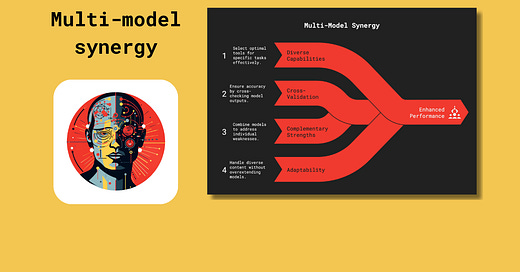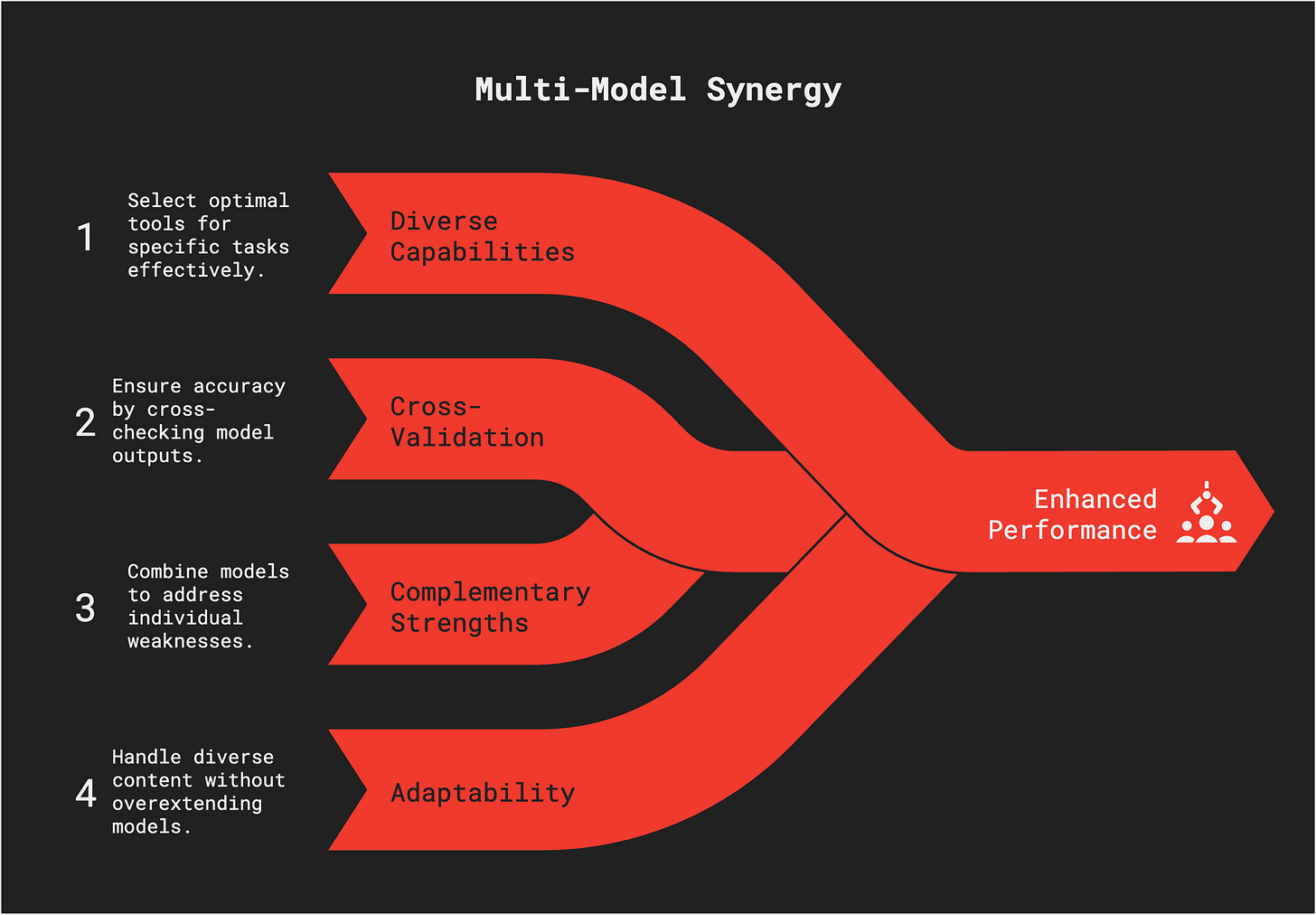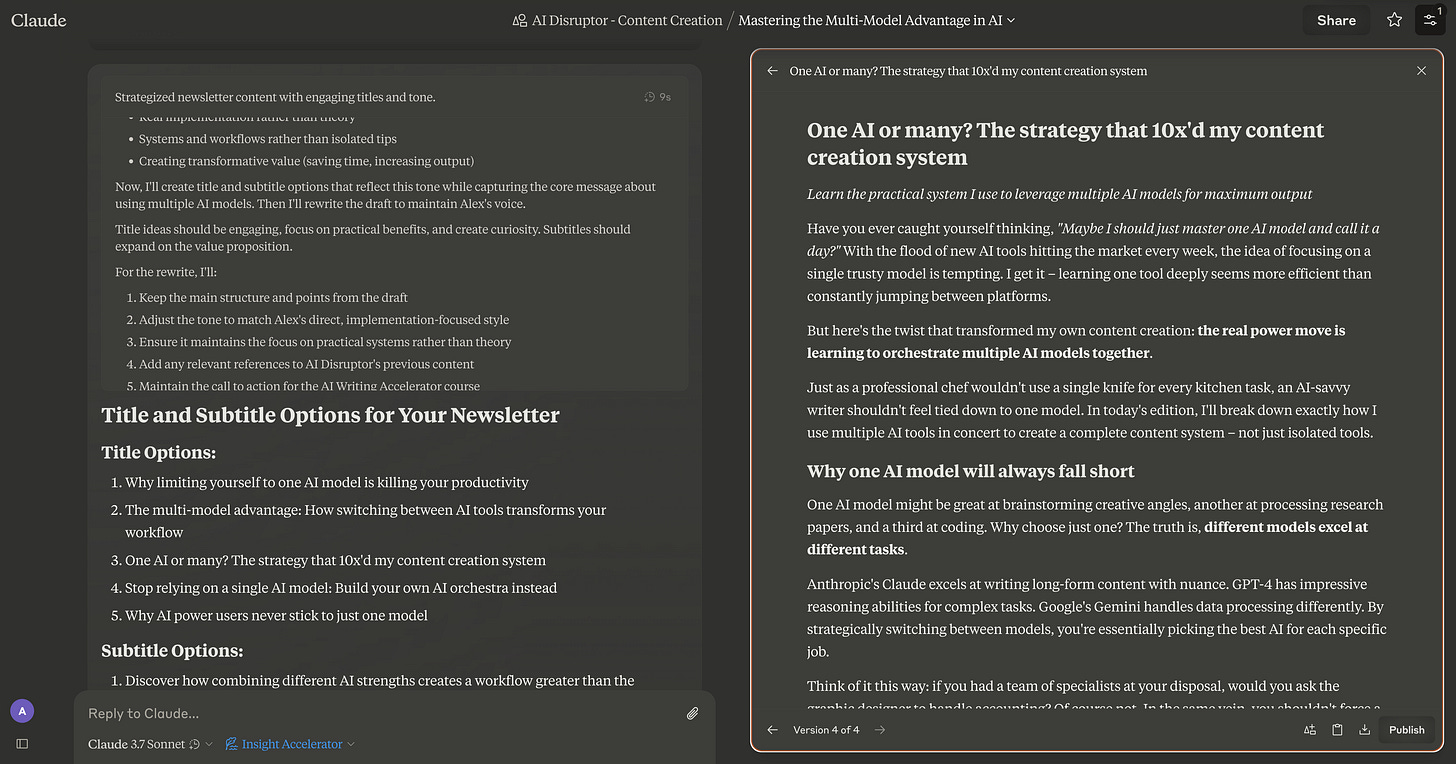Professional writers never rely on a single AI model
Orchestrate multiple AI tools to achieve systematic content production.
Have you ever caught yourself thinking, "Maybe I should just master one AI model and call it a day?"
With the flood of new AI tools hitting the market every week, the idea of focusing on a single trusty model is tempting. I get it – learning one tool deeply seems more efficient than constantly jumping between platforms.
But the real power move is learning to orchestrate multiple AI models together.
Just as a professional chef wouldn't use a single knife for every kitchen task, an AI-savvy writer shouldn't feel tied down to one model. In today's edition, I'll break down exactly how I use multiple AI tools in concert to create a complete system – not just isolated tools.
Why one AI model will always fall short
One AI model might be great at brainstorming creative angles, another at processing research papers, and a third at coding. Why choose just one? The truth is, different models excel at different tasks.
Anthropic's Claude excels at writing long-form content with nuance. GPT-4 has impressive reasoning abilities for complex tasks. Google's Gemini handles data processing differently. By strategically switching between models, you're essentially picking the best AI for each specific job.
Think of it this way: if you had a team of specialists at your disposal, would you ask the graphic designer to handle accounting? Of course not. In the same vein, you shouldn't force a storytelling-oriented model to handle heavy data analysis, or vice versa.
In my experience building systems for several startups, my own journalistic writing, and for AI Disruptor, I've seen how one model catches what another misses, or adds a nuance that the first one couldn't grasp. It's like having a panel of expert advisors rather than a single voice.
The multi-model advantage
Leveraging multiple models brings concrete benefits that a one-model approach simply can't match:
Diverse capabilities: Choose the best tool for each specific job, since no single model excels at everything
Cross-validation: Have models double-check each other's outputs, ensuring more accurate and reliable results (crucial when ChatGPT confidently states something you're not sure about)
Complementary strengths: One model's weakness is often another's strength – combine them to overcome individual limitations
Adaptability: With a multi-model toolkit, you can tackle various content types without stretching a single model beyond its capabilities
Multiple models collaborating often produce more accurate, nuanced results than what a single model generates alone.
The specialized AI writing toolkit I've built
Let me pull back the curtain on my actual process. I live these daily. My content system relies primarily on three AI tools, each with a specialized role that I deploy strategically depending on the task at hand:
1. Claude 3.7 Sonnet – The articulate writer
Claude is my primary writing workhorse. When it's time to actually draft an article, newsletter, or script, Claude 3.7 is my go-to. Why? It's remarkably articulate and context-aware. As I shared in a previous Claude 3.7 guide, it produces well-structured, coherent writing that often needs minimal editing.
Its dual-mode capability (fast Normal mode vs. deeper Extended thinking mode) lets me balance speed and thoroughness based on what the content needs. In practice, Claude functions as the wordsmith of my operation – taking ideas and turning them into polished prose that sounds like me.







